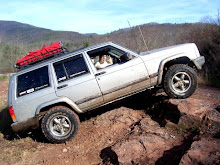For handloading, I got into it on the cheap. I purcahsed a Lee Classic Loader for under $25 online. I then purhcased a pound of powder for about $20, 1,000 38 special plated projectiles for about $70, and a thousand primers for $30. Once i had all of my components assembled, i got to work.
The lee Classic Loader is very basic. I chose to reload the 38 special round because the overall length of each cartridge isn't important because they're being used in a revolver. Other cartridges, such as those used in semiauto guns, sometimes headpsace on the overall length of the casing. If your handloaded cartridges are too long, the base of the cartridge can protrude from the barrel and cause an explosion because that rear section of the brass is not adequately supported while firing, often causing case ruptures. 38 special isn't a necked cartridge, its straight like a piece of pipe, not tapered. This means that i can reload with little effort and reuse the same brass many times before stressing the brass ot the point of failure. Being held into the cylinder by a rim, the overeall length of the 38 special really isn't that important because they'll still fit in the cylinder.
The Lee Classic Loader requires the use of a hammer to produce loaded ammo. The process is loud and slow, but it works. My initial loads did not function well, but i'm still unsure whether that was an issue of a poor burn rate of powder, partially contaminated primers, or a crimping issue. There are two schools of thought on my possible crimping issue. Either i way overcrimped the brass, causing a big pressure buildup before the brass lets go of the projectile, or I did not crimp the brass enough to let the necessary pressure build up.
In all, it has been a great way to get into handloading and being cheap doesn't hurt either.
Wednesday, July 14, 2010
Subscribe to:
Post Comments (Atom)

Hammering a bullet just sounds on paper like a terrible idea, hehehe
ReplyDelete